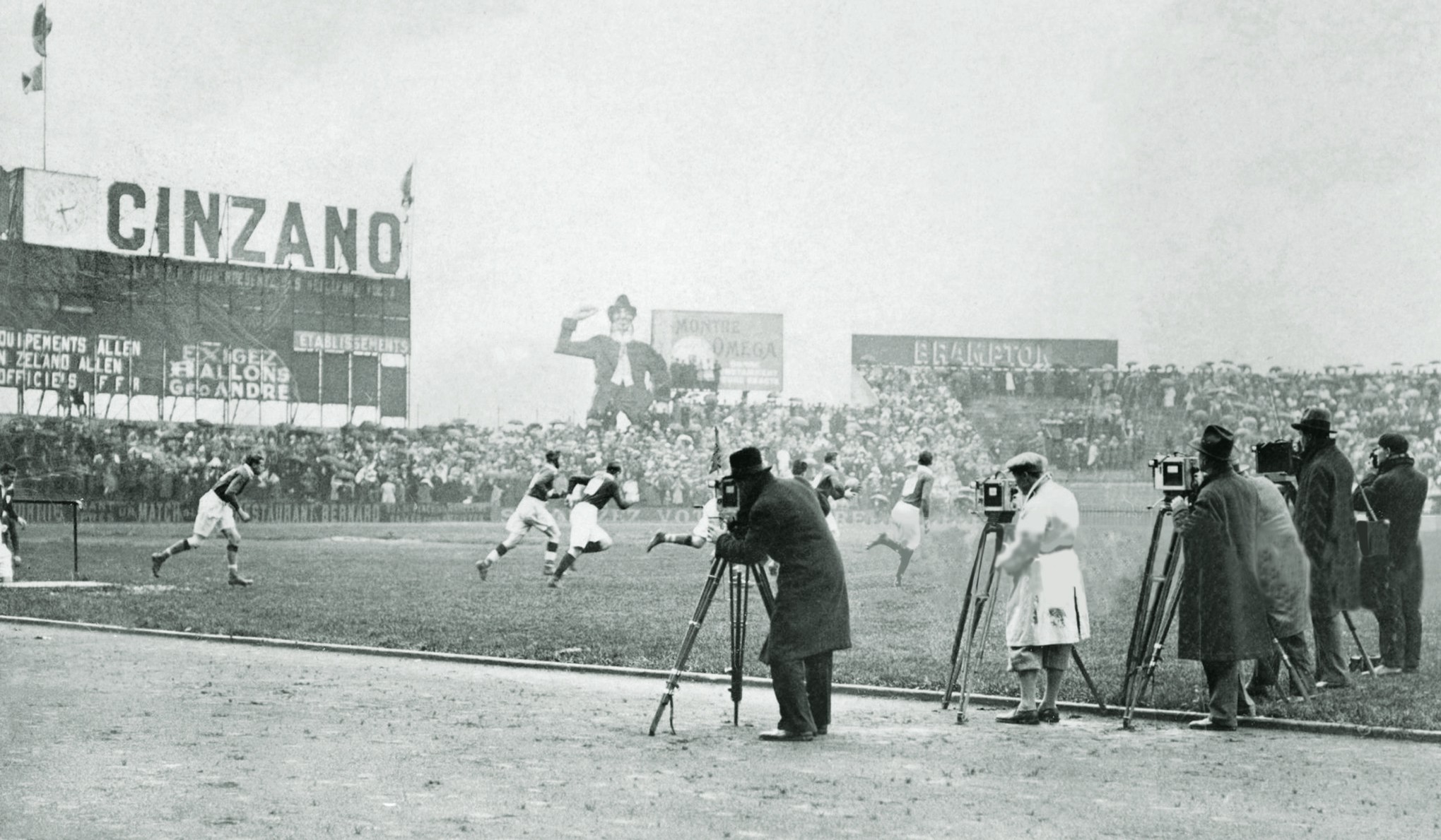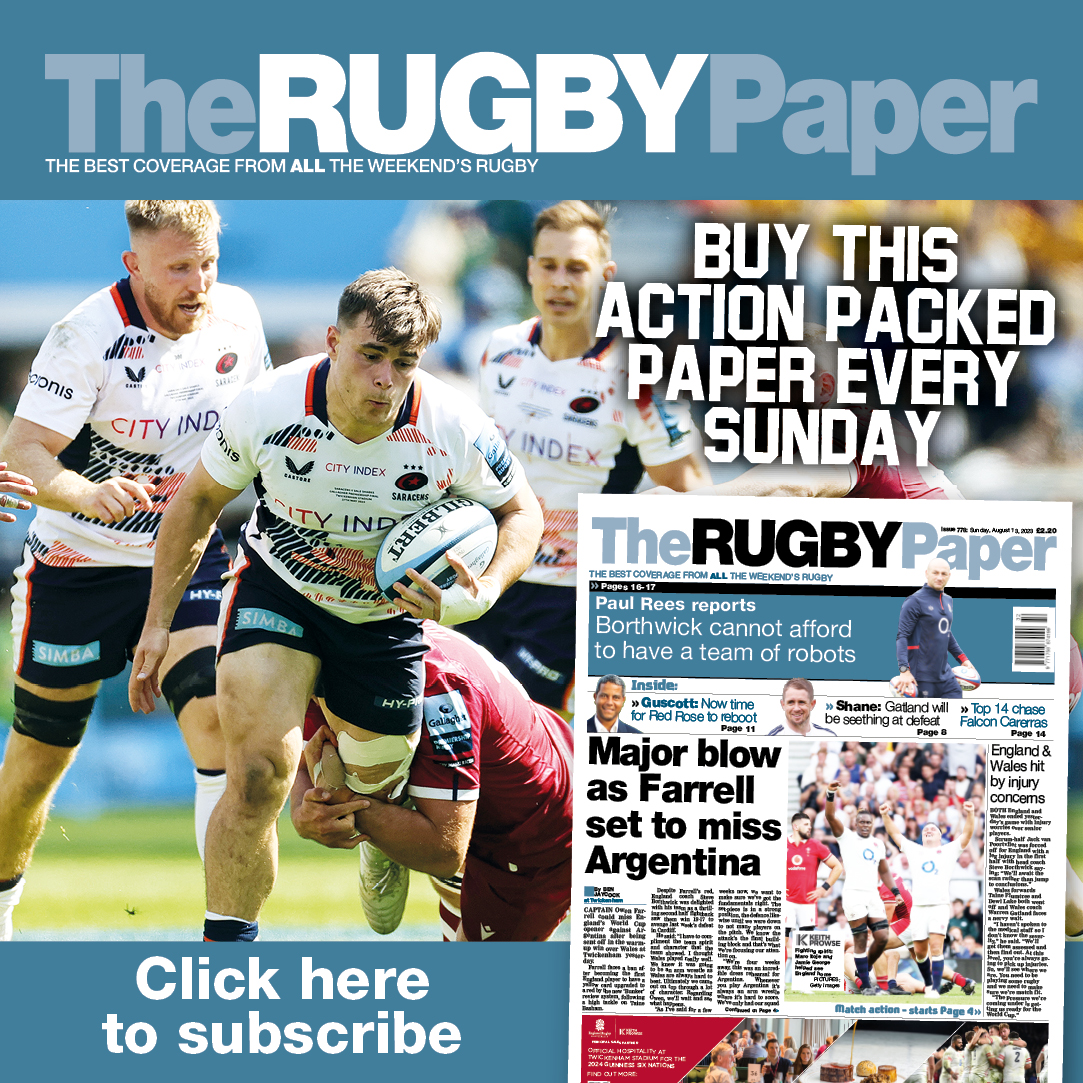Brendan Gallagher delves into some of rugby’s most enduring images, their story and why they are still so impactful

Iconic Rugby Pictures: PART 59
Big business leads French towards professionalism January 1, 1931
What’s happening here?
It’s January 1, 1931 and France skippered by Quillan’s flanker Eugene Ribere, who scored the only try of the match, are sprinting out onto the pitch at Stade Colombes in Paris – the venue of the 1924 Olympics – to play Ireland in the opening game of the 1931 Five Nations.
A clutch of Press photographers faithfully capture the moment while the grand old stadium is increasingly festooned with garish advertising billboards. Rugby in France has started to look very different to the sport played by other nations around the globe. Alarmingly different to some.
The story behind the picture?
After World War 1, Rugby Union in France quickly lurched towards professionalism at elite club level. The Home Unions and indeed the Dominion nations – Australia, South Africa and New Zealand – continued to glory in the amateur ethos and promote its fine attributes, but in France it was big business and a means of earning a living. By 1930 a young player could earn considerably more playing amateur Rugby Union than professional Rugby League or soccer.
Why was this exactly? The social historians are not in full agreement but there are various theories. First rugby lost its elitist tag and became a sport of the people, especially in the south west. Conscription and millions of men serving in the forces where rugby was played unquestionably played a part in that process.
Second the intense local rivalries between neighbouring village and town teams escalated to an extraordinary degree and sport, particularly rugby, was the ultimate expression of this. They played in front of large admission-paying crowds and the teams became the centre of civic pride and the focus of local sponsors and investment.
Payments were direct and indirect. Money in your pocket and/or guaranteed employment at the factory or business of one of said local sponsors. And, of course, out of that situation a transfer market soon arose with the best players in a locality receiving counter offers from various clubs.
What happened next?
The free market took over and it all became a bit wild west. Think English club rugby circa 1995-2000!
Down in Quillan, a modest village of scarcely 3,000 souls, local millionaire Jean Bourrel – who employed just about every villager in his internationally famous hat making factory – took over the club and hired most of the best players in south east France.
Six star players from the top-rated Perpignan side, a couple from Beziers and others from Narbonne, Carcassonne and all points south. All were given ‘jobs’ – employment that mainly involved training and playing rugby and wearing the famous Bourrel hats on match days and at social functions.
Off the back of this influx of talent Quillan suddenly started beating all the aristocrats of the French game, reaching three straight French Cup finals between 1928-30, winning the title in 1929 when they beat Lezignan, another big-spending village side.
Others started to tap up local industrialists and entrepreneurs – CS Vienne, Bayonne and Lyon – and for a while became powers in the game but the sport was also out of control.
There was mass violence on the pitch and among spectators, fatalities on both sides of the touchline, referees were bribed or intimidated and at least one took to taking his massive pet bulldog with him to games for protection.
Why is the picture iconic?
This picture will surely have sent a shiver down the back of administrators in Britain and Ireland. Rugby in France was out of control. Huge on site advertisements – big financial investors in the game – everywhere and that was replicated tenfold in the various publications that now covered the sport extensively.
Miroir de Sports led most of its weekly editions with either rugby or cycling stories while L’auto-Velo also devoted acres of space to rugby. Better still from January 1929 the twice weekly Midi Olympique, a mighty publication then and now, was entirely devoted to rugby while all the local weeklies in the south west printed chapter and verse on their local team.
Rugby was the parish pump sport in which everybody was involved. While rugby fans in Britain searched the broadsheets for a single column report on a big game, it took their counterparts in France a couple of hours over cafe au lait and croissant to digest all the rugby news and gossip. French rugby had created a considerable consumer market.
Footnote. Everything was building to a crescendo and at the end of this 1931 tournament, after they had beaten England 16-15 to finish joint second, France were thrown out of the Five Nations. They might have transgressed but were they also threatening to become too good and too big for Anglo-Celtic tastes?
It was a devastating blow. Union in France declined, over 200 clubs folded or turned to RL over the next nine years. They did try to clean up the club game – or at least make the payment culture less obvious – and were due to be welcomed back in 1940, a Championship that never took place. They regained their place in 1947.

























Pingback: พรมรถ